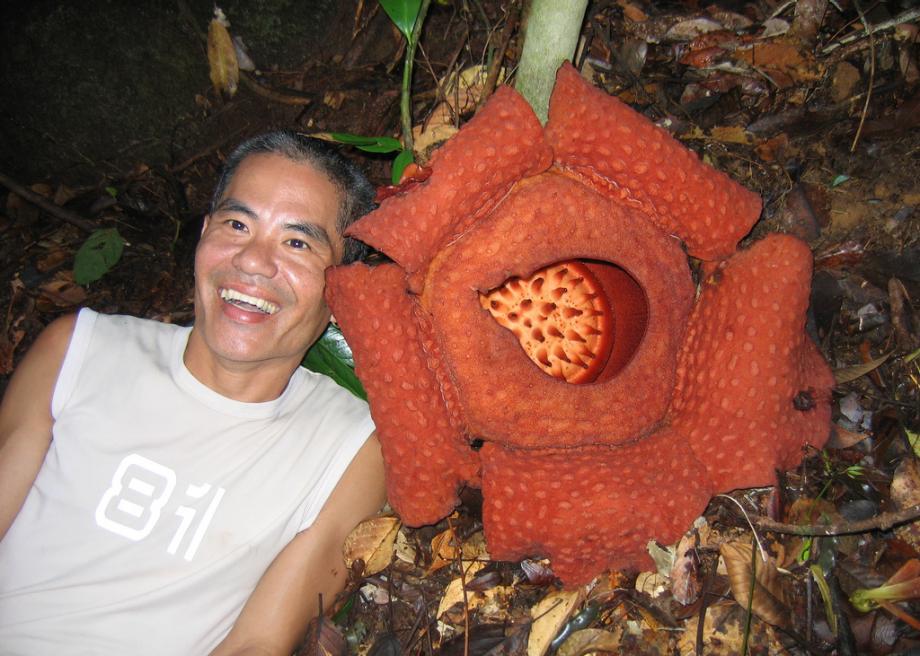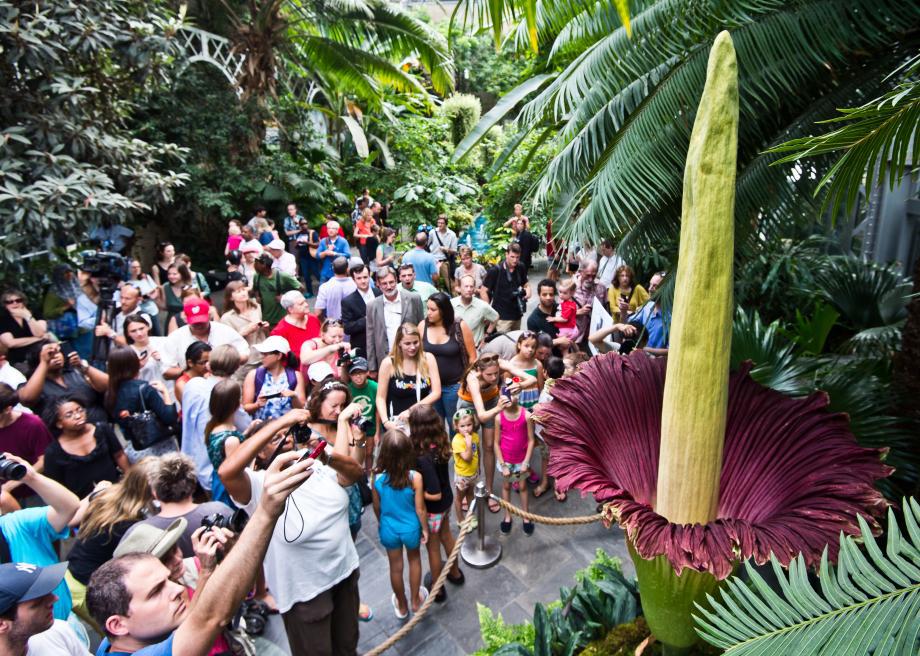Atlas Obscura on Slate is a blog about the world’s hidden wonders. Like us on Facebook, Tumblr, or follow us on Twitter @atlasobscura.
Something rare and magnificent is taking place at LA’s Huntington Gardens this week. For the first time in four years, a Titan Arum flower in the Conservatory will bloom, reaching around six feet in height and perfuming the air with the scent of rotting meat.
Titan Arum, or Amorphophallus titanum, is also known as the corpse flower. Native to the equatorial rainforests of western Indonesia, it is known for its enormous proportions and its off-putting odor, which attracts flies for pollination.
This will be the fifth time that Huntington’s Titan Arum has bloomed since its initial flowering in 1999. The species requires about seven to 10 years of growth before it will first bloom, and can go for many years without flowering again. The flower, which reaches a diameter of three to four feet, lasts a mere day or two. Titan Arum enthusiasts must be prepared to mobilize at short notice to catch a glimpse and a whiff of the majestic bloom.
Though the Titan Arum is widely thought of as the corpse flower, there is another group of plants that goes by that nickname—and they are even more elusive. The Rafflesia is a stinky parasitic plant native to southeastern Asia that produces the largest flowers in the world. Unlike the Titan Arum, the blooms are not tall and phallic, but consist of five giant tongue-like petals surrounding a circular central chamber.

Rafflesia flowers bloom for three to four days before shriveling and decaying. As with the Titan Arum, the rotting-meat scent that wafts from each inch-thick petal attracts pollinating insects.
The flowers of the largest Rafflesia species, Rafflesia arnoldii, can reach a diameter of three-foot-four. Though the Titan Arum’s proportions are occasionally larger, that plant is technically an inflorescence (a cluster of blooms) rather than a single flower, giving Rafflesia arnoldii the title of world’s largest individual flower.

Unlike the Titan Arum, which is found in botanic gardens worldwide, attempts at cultivating the Rafflesia have achieved limited success. To see and smell the flowers in the wild, your best bet is to travel to Gunung Gading National Park in Sarawak on the island of Borneo. You may need to hang around for a bit, though: the flowers bloom sporadically and unpredictably. In the meantime, you can experience the imminent blooming of the Huntington Gardens corpse flower via Instagram and Twitter.
Visit Atlas Obscura for more on the Titan Arum and the Rafflesia.

